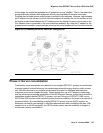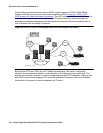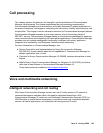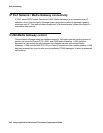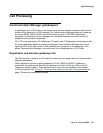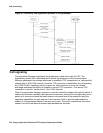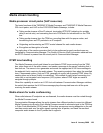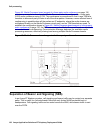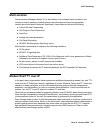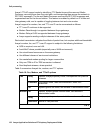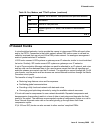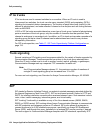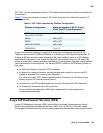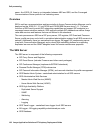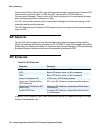
Call Processing
Issue 6 January 2008 131
Multi-location
Communication Manager release 2.2 or later allows a Linux-based server located in one
country to control gateways located across national borders and provide appropriate
country-specific tones and features. Specifically, these features include the following:
● A-law & Mu-law Companding
● Call Progress Tone Generation
● Loss Plan
● Analog line board parameters
● Call Detail Recording
● R2-MFC (Multifrequency-Signaling) trunks
Multi-location functionality is subject to the following limitations:
● 25 Countries
● R2-MFC: 8 signaling sets
● Additional Tone Generators (TN 2182 in Port Networks, built-in tone generators in Media
Gateways) are required to support country-specific tones
● No per-country alarms or traffic reports are available
● LSPs must be set to the same time zone as the server
● This feature is intended for IP-remoted gateways, not DS1-remoted Port Networks.
Modem/Fax/TTY over IP
In the past, many organizations have experienced problems transporting modem, fax, and TTY
tones over an IP Telephony network, regardless of vendor. Modems, faxes, and TTYs are very
sensitive to latency and jitter, and do not tolerate distortion induced through compression,
expansion, and transcoding. In order to overcome these difficulties, Avaya has enhanced its
modem, fax, and TTY-over-IP support in release 2.2 and later.
There are two enhanced modes for supporting Modem-over-IP (MoIP): pass-through and relay.
Pass-through is essentially a best-effort transmission, and works by forcing the use of the G.711
(uncompressed) codec for the call. Re-transmission is governed by the application.
Pass-through mode is suited to LAN environments where both ends of a call are synchronized
using a common clock source. Relay, on the other hand, uses redundant packet transmission to
protect against packet loss. Because relay mode does not force the use of G.711, it requires
less bandwidth than pass-through, however requires more DSP resources. Relay is more
effective than pass-through across a WAN.



